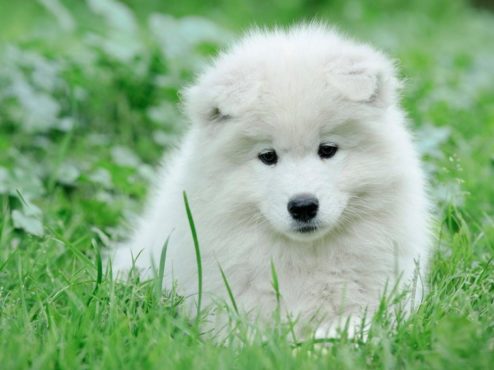Top 10 Most Expensive Dog Breeds In The World
3. Samoyed
Siberian dogs that were bred by nomadic reindeer herders for herding and pulling sleds – Samoyeds today are one of the most expensive dog breeds and are sold for between $6,500 – $12,000. It’s a loving and playful breed that gets along well with its family, they are excellent companions for little children as well as an old age. It can be overprotective at times and are also known to be a bit stubborn, so it’s important to socialize them early and have a firm hand in training.

The Samoyed is a large breed of herding dog, from the spitz group, with a thick, white, double-layer coat. It takes its name from the Samoyedic peoples of Siberia. These nomadic reindeer herders bred the fluffy white dogs to help with the herding, and to pull sleds when they moved. An alternate name for the breed, especially in Europe, is Bjelkier.
The AKC Standard requires 21–23.5 inches (53–60 cm) at the shoulder for males, and 19–21 inches (48–53 cm) for females. The UK Kennel Club Standard requires 51–56 centimetres (20–22 in) for males, and 46–51 centimetres (18–20 in) for females. Samoyed eyes are usually black or brown and are almond in shape. Blue or other color eyes can occur but are not allowed in the show ring. It is in the “brown and black section” in its family, the Spitz family. Samoyed ears are thick and covered with fur, triangular in shape, and erect. They are almost always white but can often have a light to dark brown tint, usually around the tips of the ears.
The Samoyed tail is one of the breed’s distinguishing features. Like the Alaskan Malamute, the tail is carried curled over the back; however, unlike the Malamute, the Samoyed tail is held actually touching the back. It should not be a tight curl or held flag-like; it should be carried lying over the back and to one side. In cold weather, Samoyeds may sleep with their tails over their noses to provide additional warmth. Almost all Samoyeds will allow their tails to fall when they are relaxed and at ease, as when being stroked or while eating, but will return their tails to a curl when more alert.